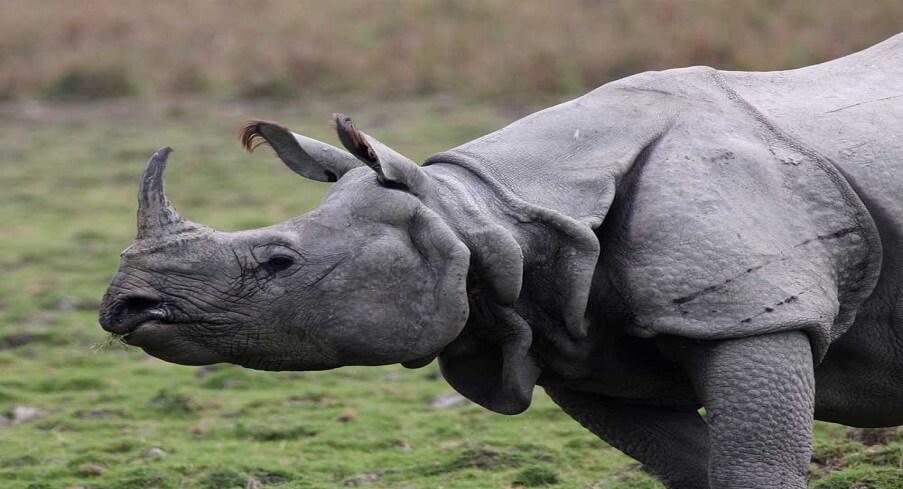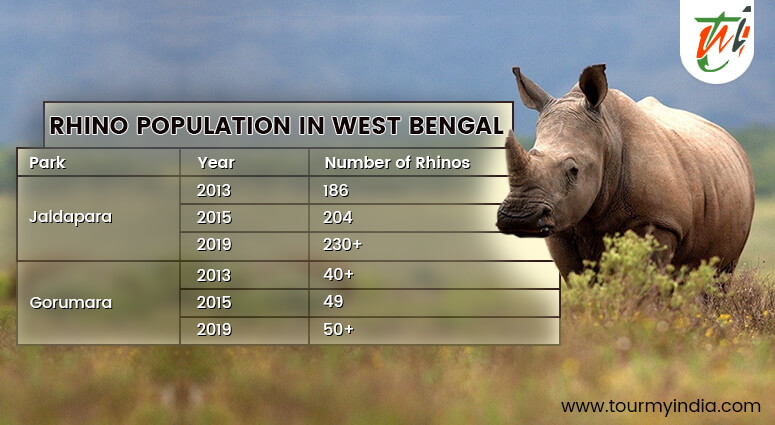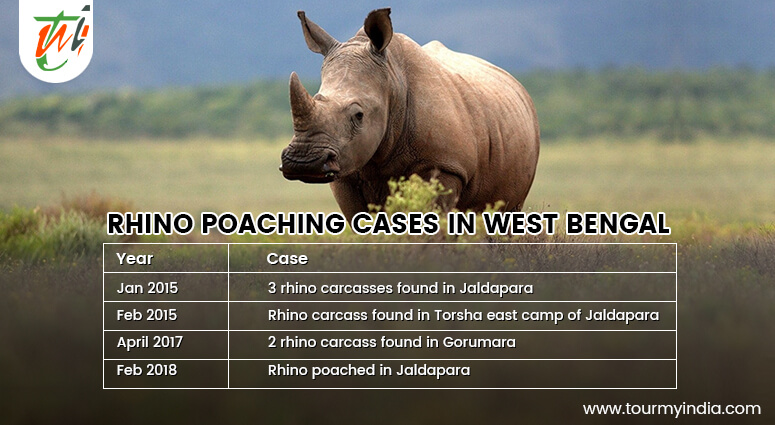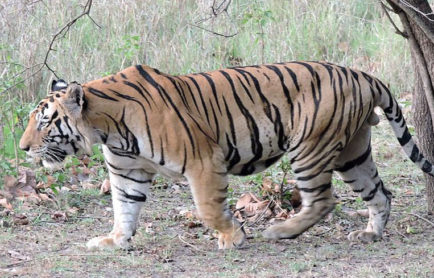Providing a Safe Haven: Rhino Population in North Bengal Increases by 12%
 Published: 02 Mar, 2019By Ashwini
Published: 02 Mar, 2019By Ashwini

Good news for the conservationists across the country, the rhino conservation programmes in India has shown a positive result. The population of Indian Rhino in North Bengal increased by 12% over the period of four years. The successful conservation story has inspired many other states to implement such strict guidelines for animal conservation in India. North Bengal is also credited for controlling the cases of poaching and providing better habitat for wild animals.
In case you didn’t know
Indian Rhinoceros also known as One-Horned Rhinoceros are a native species found in India. Placed under Vulnerable list of IUCN Red List, Rhino population was one of the worst affected species in India. A constant threat of poaching along with shrinking habitat meant that the country lost a majority of its Rhino population to just 2500 in 2008. One of the most interesting facts about One-horned Rhino is its unique horn which is made of the same protein which constitutes the formation of hairs.
The heart of the matter

The north Bengal is home to 280 Rhinos as compared to 250 in the year 2015. This data was acquired after the conclusion of a recent Rhino census in North Bengal. The one-horned rhino population in Bengal is second largest, after Assam which has the highest rhino population in India. In Bengal, the population is scattered across two major parks.
| Park | Year | Number of rhinos |
| 2013 | 186 | |
| Jaldapara | 2015 | 204 |
| 2019 | 230+ | |
| 2013 | 40+ | |
| Gorumara | 2015 | 49 |
| 2019 | 50+ |
The new recently conducted rhino census puts the population in Jaladpara between 231 and 236 and the population in Gorumara is estimated between 47 and 52. The population in Jaladpara rose from 204 in 2015.
The numbers were estimated after a census was conducted based on the direct sighting. The Chief Conservator of Forests, North Bengal Division, Ujjwal Ghosh said that they have given the count with an upper and lower limit as direct sighting method is not the best form to estimate the actual population.
During the census at Jaladpara, 231 rhinos were spotted but there can be more, said Ujjwal Ghosh. He said that the same procedure was followed in Gorumara too. However, he said that besides direct sighting the officials also collected rhino dung sample to determine the final number and ascertain the male and female count.
Chief Wildlife Warden, Ravi Sinha said the Wildlife Institute of India (WII) said that Institute would carry out the further studies to determine the exact male-female ration in the region.
The need for determining the sex ratio
Ravi Sinha said that there is an immediate need to determine the sex ratio as both the rhino habitat in North Bengal are connected the authorities need to be aware whether if the parks have reached their carrying capacity. If the population is increasing, new policies would be needed for Safeguarding India’s rhinos in North Bengal.
Saving the endangered one-horned rhino: A successful conservation story
Some conservationist credited the implementation of rhino conservation policies as the reason for an increase in rhino population. Assam has been the most proactive state in preserving its limited rhino population. From shooting at sight for poachers to implementing stricter punishments for convicted poachers, conservation policies in India have changed and evolved over time to fight against rhino poachers.
While earlier the conviction of poacher was considered an anomaly, recently there has been an increase in conviction of cases pertaining to rhino killings. Apart from that, the state government has ensured that rhinos are provided with proper habitat.
Also Read
Cases of rhino poaching in recent years

Between February 2015 to February 2018, there have been 7 cases of rhino poaching. Despite strict vigil, poachers have managed to kill 7 rhinos.
| Year | Case |
| Jan 2015 | 3 rhino carcasses found in Jaldapara |
| Feb 2015 | Rhino carcass found in Torsha east camp of Jaldapara |
| April 2017 | 2 rhino carcass found in Gorumara |
| Feb 2018 | Rhino poached in Jaldapara |
Steps to Stop Rhino Poaching
The first and foremost step to ensuring rhino preservation in India is protecting them against the poachers. Implementation of the Wildlife Protection Act is an absolute necessity. Apart from that the case presented by the prosecution should be airtight. In most cases, poachers are not found guilty is because of weak prosecution and empowering that can lead to better conviction rates.
Future of one-horned Indian rhinoceros
The forest officials in North Bengal have introduced patrolling both on foot and vehicles inside the national park. They said that elephants are also being used for patrolling. In recent times there have been concerted efforts to strike at the illegal animal trade. With stricter laws and better prosecution, alongside vigil can minimise the cases of rhino poaching in India.
Popular Post
Category by Destinations
Travel Intel
Category by Continent
India recent post
Enquiry Form
Get Customized Travel Quotes from Tour My India








